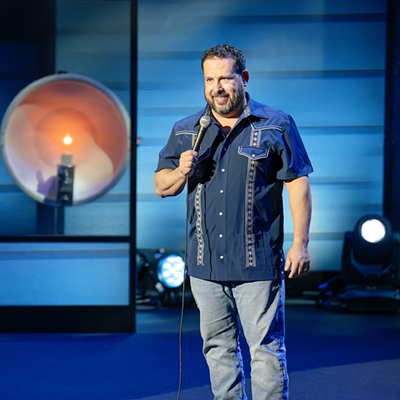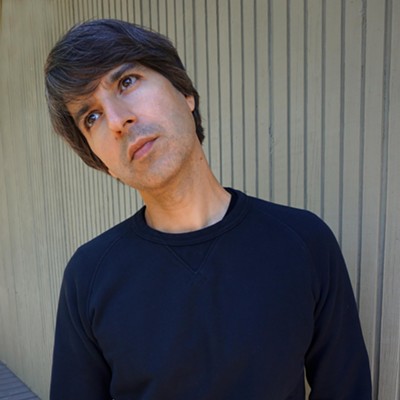Faced with the challenge to bear witness to the effects of the war, the American Friends Service Committee (AFSC) in January 2004 began the traveling memorial exhibit Eyes Wide Open: The Human Cost of War.
Representing each lost life with a pair of combat boots, the exhibit is a silent reminder of the deep consequences of war. Arizonans wore 38 of those pairs of boots, says AFSC state director Melanie Emerson.
The number of American military personnel who had died in the war at the time the exhibit began was 504, about a third of today's total. Eyes Wide Open has since visited more than 40 cities, the latest being Tucson. From here, it travels to Los Angeles.
The exhibit will be on display this Saturday and Sunday, March 5 and 6, in downtown's Armory Park. It is the only Arizona stop of the tour.
Those days will be packed with events designed to remember the lives lost in Iraq, and not just American lives. The exhibit includes 1,500 pairs of shoes to represent a small portion of the Iraqi civilian deaths in the war, as well as a "Wall of Remembrance" listing the names of all those the Iraqi government has officially confirmed--about 3,000.
The actual number Iraqi civilians dead in the war is estimated to be between 20,000 and 100,000, according to an AFSC press release.
Eyes Wide Open is not an anti-war protest, although it's only fair to note that the American Friends Service Committee is a Quaker-based social-justice organization that historically opposes war. A solemn memorial, the exhibit is designed to exist outside ideology, to transcend protest and argument, to draw from and inspire compassion for the costs of war.
"As you know, trying to tell people what to think never works," says the AFSC's Emerson. "So the idea behind this exhibit is to have people come and see it and be there for a while and to draw their own conclusions."
Set-up and breakdown for Eyes Wide Open--as well as maintaining enough staffing for the related events--require at least 50 people to donate their time. "Even with that many volunteers, it takes four hours to put it up," Emerson says.
Assembling the vast display is not as simple as throwing boxes of boots out onto the lawn.
"It does require a degree of solemnity to place and pack away the boots, as well as the artifacts that people bring," Emerson says. Some people bring flowers and photographs to Eyes Wide Open to place with the boots of a loved one, and when they do, those are also packed away carefully and saved for subsequent stops of the exhibition. The AFSC has teamed up with members of the Tucson Multi-Faith Alliance to have chaplains and grief counselors on hand to deal with issues that may come up among those attending the exhibit.
The combat boots on display are acquired from or donated by Army-Navy surplus stores, Emerson says. A few pairs have been sent to the exhibition by the loved ones of the soldiers the boots are meant to represent.
In conjunction with Eyes Wide Open, the AFSC and the Alliance for Peace and Justice in the Middle East will present a lecture on the occupation of Iraq by Fernando Suarez del Solar, a Mexican-American whose son was among the casualties during the first week of the war. He will speak at 5 p.m. Friday, March 4, in Room 120 of the University of Arizona's Integrated Learning Center, 1500 E. University Blvd.
Suarez has since founded the group Proyecto Guerrero Azteca (Aztec Warrior Project) in memory of his son and the many others who have died in the war.
The following Eyes Wide Open activities will take place in Armory Park, which is bounded by Fifth and Sixth avenues and 12th and 13th streets.
Saturday, March 5
- 11 a.m. to 12:30 p.m. --Opening ceremony
- 12:30 to 5 p.m. --Reading of the names of the deceased
- Evening--Vigil, with readings and memorials, with acoustic music
- 11 a.m. to noon--Student essay readings and award ceremony
- 12:30 to 5 p.m. --Reading the names of the deceased
- 6 p.m. --Closing ceremony and multi-faith service







